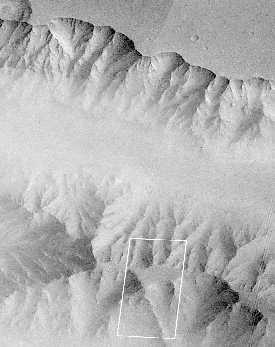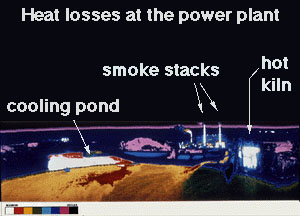Exploratour - Mars Exploration
Click on image for full size
Image from: Malin Space Science Systems
Mars Global Surveyor
The mission of Mars Global Surveyor (MGS) was to map the surface of Mars from space, a mission similar to the Magellan mission to Venus. The spacecraft was sent to probe the topmost portion of the Martian atmosphere, and make detailed observations of the Martian weather. Because MGS was to orbit Mars and not land on the surface, the trajectory was a little different than that of Mars Pathfinder, allowing MGS to launch before MPF, but arrive at Mars after MPF had already landed. MGS carried a number of instruments which were similar to those on the lost Mars Observer mission.
As part of the less expensive and more risky premise of the Mars Surveyor Program, Mars Global Surveyor was the first to employ the procedure of areo-braking, that is using the atmosphere to slow the spacecraft sufficiently that it could be placed into orbit. This procedure was experimental, and resulted in the failure one of the solar panels. The thickness of the atmosphere forced the solar panel out of its latch, such that it began to swing out of control. The wobbling of the solar panel forced engineers to raise MGS to higher altitudes than originally expected in order to continue its mission.
In spite of this failure, MGS has returned data which will help scientists refine their models of the Martian atmosphere and prepare for the Mars '98 mission. Among the important new results from the mission is the definite confirmation of the presence of a Martian magnetosphere.












